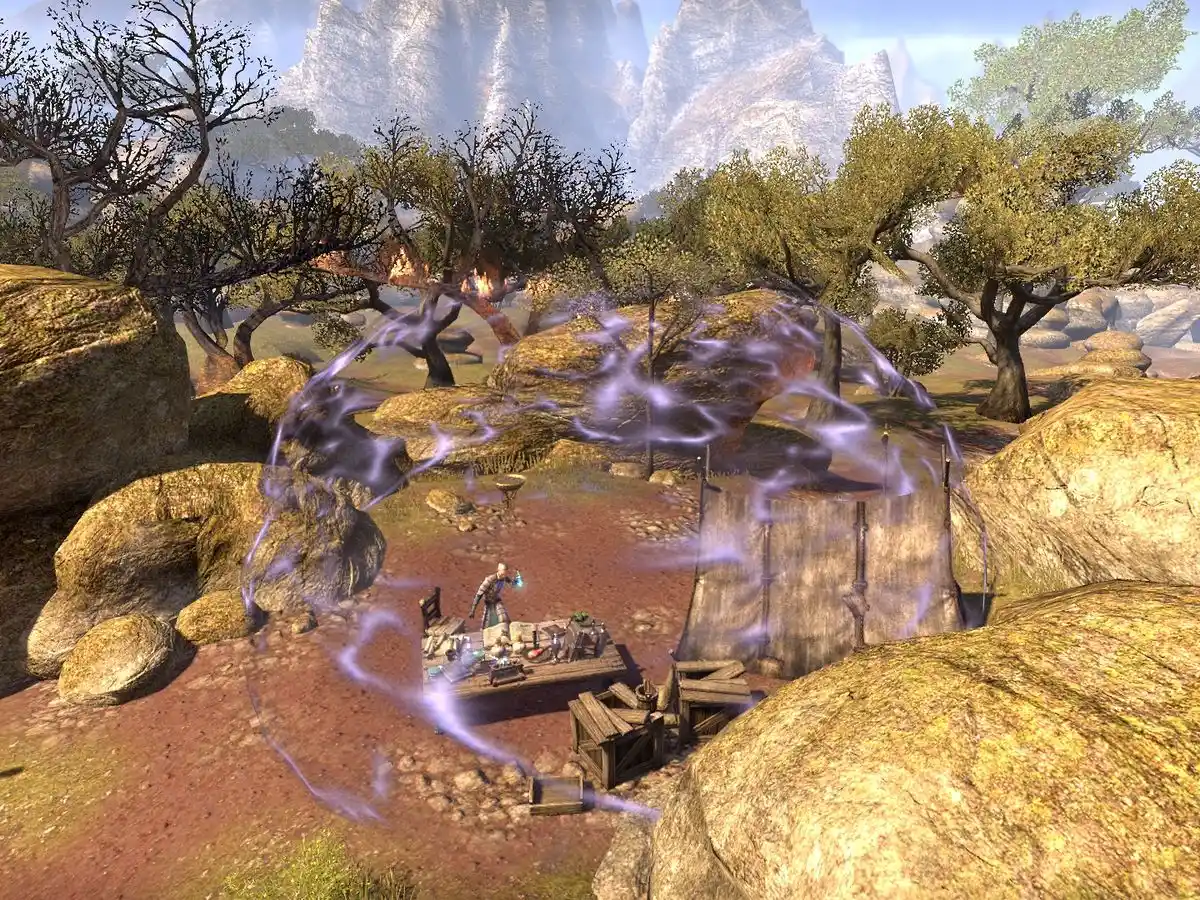Understanding Questionable Questing
Video games have evolved into intricate worlds that offer players not only engaging gameplay but also deep stories and immersive experiences. However, not all quests in these games are created equally. Some may seem rushed, repetitive, or downright frustrating—this is where the term “questionable questing” comes into play. But what exactly does it mean, and why is it something that players should be aware of? In this article, we’ll dive into the world of questionable questing, exploring its definition, examples, and impact on players.
What Is Questionable Questing?
At its core, questionable questing refers to quests or missions in video games that fail to meet certain standards of quality. These quests might be poorly designed, feel uninspired, or present challenges that feel unfair or out of place within the game’s world. The term is not just about difficulty or complexity—it’s about quests that don’t quite align with the expectations of the players or the game’s narrative.
In the broader context, questionable questing can refer to various aspects of game design and narrative storytelling. A quest could be considered questionable if:
- It feels overly repetitive or tedious.
- The rewards do not justify the effort involved.
- The story lacks depth or fails to advance the game’s plot meaningfully.
- It forces players to engage in actions that break immersion or feel disconnected from the game’s setting.
While many games feature side quests and filler content to provide additional gameplay, the best quests are those that feel rewarding, impactful, and meaningful. Questionable questing, on the other hand, can detract from the overall experience and leave players frustrated or disengaged.
The Impact of Questionable Questing on Player Experience
When players encounter questionable questing in a game, the impact can be significant. It’s not just about missing the mark on gameplay or story; it’s about how these quests influence the player’s overall experience and satisfaction with the game.
1. Frustration and Disengagement
One of the most immediate effects of questionable questing is player frustration. If a quest is too difficult, poorly designed, or simply not enjoyable, players may begin to lose interest in the game. This can lead to disengagement, as they may feel that completing the quest is more of a chore than a fun challenge.
Additionally, repetitive quests that don’t offer anything new or exciting can make players feel like they’re stuck in a cycle, forcing them to go through the same motions without gaining any new insights into the game’s world or narrative.
2. Breaking Immersion
Games often aim to create an immersive experience that transports players into their fictional worlds. When a quest feels out of place or poorly executed, it can break that immersion. Players may begin to notice inconsistencies in the story or gameplay mechanics, which can lead to a feeling of detachment from the game world. This is particularly true when quests seem like filler content that doesn’t contribute meaningfully to the overarching narrative.
3. Diminished Storytelling Quality
In many modern video games, the narrative is just as important as the gameplay. Questionable questing can severely hinder storytelling, especially when quests do not tie into the main plot or character development. Players may find themselves completing side quests that don’t add anything to the story or, worse, undermine the narrative’s emotional impact.
4. Loss of Motivation
Reward systems play a crucial role in driving players to complete quests. However, if the rewards for questionable quests don’t feel worthwhile—whether due to low-value items, lackluster story payoff, or poor game progression—players may lose motivation to continue engaging with the game. This is especially problematic in open-world games or games with multiple side quests, where the overall experience can be negatively affected by a series of underwhelming tasks.
Examples of Questionable Questing
While the concept of questionable questing can apply to any type of quest, certain examples from popular games highlight the common pitfalls developers face when designing Your Internet Bedroom: The Ultimate Space for Work and Relaxationquests.
1. Fetch Quests
Fetch quests are a staple in many RPGs and open-world games, but they can often be seen as the epitome of questionable questing. These quests typically involve players going from point A to point B to retrieve an item and return it to a quest giver. While simple fetch quests can be fun in moderation, their overuse can make the gameplay feel repetitive and uncreative.
Games like The Elder Scrolls V: Skyrim are notorious for having a vast number of fetch quests, which often lack narrative significance. These quests can quickly turn into tedious exercises in travel and inventory management, rather than meaningful interactions with the world or characters.
2. Escort Quests
Escort quests are another example of questionable questing, particularly when the AI controlling the NPC you’re escorting is poorly designed. Players may find themselves stuck with an NPC who gets stuck on geometry, runs in the wrong direction, or refuses to follow the player properly. In games where escort quests are a core mechanic, these issues can quickly become a frustrating experience.
In The Last of Us, while escorting Ellie can be a meaningful and emotional experience, other games have struggled with escort AI, making these quests feel more like a test of patience rather than a narrative-driven experience.
3. Grind Quests
In some games, particularly MMORPGs, grinding is a part of the experience, but excessive grind quests can quickly become a chore. These quests often require players to kill a certain number of enemies or collect specific items, and while they may seem like a way to build character progression, they often feel like filler content. If grind quests lack variation, engaging mechanics, or a compelling reason for players to complete them, they can detract from the overall enjoyment of the game.
Games like World of Warcraft have been criticized in the past for relying too heavily on grind quests, where players are asked to complete tasks that feel monotonous without providing much narrative or world-building value.
How to Recognize Questionable Questing in a Game
Identifying questionable questing in a game requires players to be attentive to the design and structure of the quests they encounter. Here are a few tips for recognizing when a quest may be questionable:
1. Lack of Story Integration
If the quest feels detached from the game’s main narrative or doesn’t contribute to character development or world-building, it may be a sign of questionable questing. The best quests are those that feel like a natural part of the story, even if they are optional side quests.
2. Excessive Repetition
Repetitive quests that ask players to do the same thing over and over again—whether it’s killing the same enemies, collecting the same items, or traveling back and forth across the map—can feel like filler content. If a quest’s only challenge is repetition, it’s a likely candidate for being a questionable quest.
3. No Clear Rewards
If a quest doesn’t offer a meaningful reward or has rewards that don’t justify the time or effort required, it can feel like a waste of time. Players should feel a sense of progression or accomplishment after completing a quest, especially if it’s a time-consuming or difficult task.
4. Frustrating Mechanics
Quests that are poorly designed due to frustrating mechanics, such as bad AI, unfair difficulty, or unclear objectives, can be a sign of questionable questing. These quests can make the experience feel more like a series of obstacles than an enjoyable challenge.
How to Improve Questionable Questing
Game developers have a responsibility to ensure that the quests they create are engaging, rewarding, and well-integrated into the world they’ve built. Here are a few tips for improving questionable questing:
- Offer meaningful rewards: Rewards should be commensurate with the effort players put into the quest.
- Ensure quests are varied: Mix up the types of quests and tasks to keep players engaged.
- Tie quests to the narrative: Even side quests should feel relevant to the larger story or character development.
- Improve mechanics: Avoid frustrating elements such as bad AI or unclear objectives that can detract from the fun of completing a quest.
Conclusion
Questionable questing can significantly impact a player’s experience with a game, especially when it comes to immersion, story, and overall enjoyment. While fetch quests, escort missions, and grind-heavy tasks may seem like an easy way to add content, they need to be carefully crafted to ensure they remain engaging and meaningful. Developers who focus on creating varied, well-integrated, and rewarding quests will keep players immersed and invested in their games, making for a much more enjoyable experience.
Whether you’re a player seeking to avoid frustrating quests or a developer looking to improve your game’s quest design, understanding the nuances of questionable questing is essential for crafting an unforgettable gaming experience.






